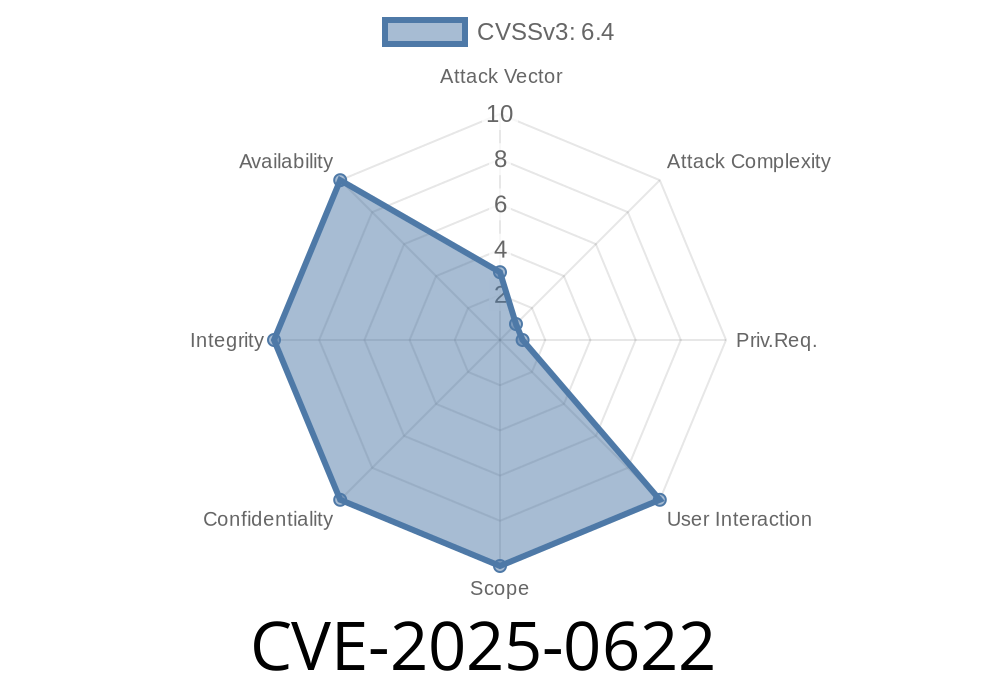---
Earlier this year, security researchers uncovered a critical vulnerability in GRUB2, specifically within its command/gpg handling—the flaw is tracked as CVE-2025-0622. If you administer Linux systems that rely on GRUB2, it’s vital to understand this security issue, as it can enable attackers to bypass Secure Boot and run malicious code before your operating system even starts.
In this article, we’ll break down what CVE-2025-0622 is, explore how it can be exploited, and explain why it’s such a dangerous bug in simple terms—with real code snippets and useful references.
What is CVE-2025-0622?
CVE-2025-0622 is a *use-after-free* vulnerability in the way GRUB2 handles hooks created by loaded modules. When a module (like command/gpg) is loaded, it can register “hooks”—chunks of code that GRUB2 will call at certain points. The vulnerability arises because, in certain situations, these hooks are not properly removed when the module is unloaded.
This allows an attacker to trick GRUB2 into running code from a module that is no longer present—meaning, that memory might already be re-used for something else, or the attacker might have placed malicious code there.
Why is This a Big Deal?
GRUB2 is the most popular bootloader on Linux systems. It runs *before* the actual operating system boots up—even before most security measures, like anti-virus or kernel protections, exist. If Secure Boot is active, only signed code is supposed to execute in this early stage. If an attacker can make GRUB2 run arbitrary code at this level, all bets are off: they can bypass Secure Boot, install backdoors, or completely compromise the system—long before your OS knows anything happened.
Technical Walk-through
This bug specifically affects GRUB2’s module system when unloading modules with registered hooks. If these hooks aren’t deregistered, they might be called after the module’s gone, referencing memory that could be reallocated (or supplied by the attacker).
Take a look at the (simplified) code logic
// Inside GRUB2's module system:
struct grub_hook {
void (*func)(void *data);
void *data;
};
static struct grub_hook *registered_hooks[MAX_HOOKS];
void grub_register_hook(void (*func)(void *), void *data) {
// Store the hook in the global list
registered_hooks[slot] = malloc(sizeof(struct grub_hook));
registered_hooks[slot]->func = func;
registered_hooks[slot]->data = data;
}
void grub_unregister_hook(void (*func)(void *)) {
// This function is supposed to be called on module unload!
for (int i = ; i < MAX_HOOKS; ++i) {
if (registered_hooks[i] && registered_hooks[i]->func == func) {
free(registered_hooks[i]);
registered_hooks[i] = NULL;
}
}
}
// Vulnerability: grub_unregister_hook() is not always called when a module is unloaded!
In secure operation, grub_unregister_hook() would be called when a module is unloaded, cleaning up pointers. But due to this flaw, in some cases the cleanup never happens—so the hook pointer is left “dangling”. Later, GRUB2 might call the hook, executing whatever code lives at that memory address.
Module is unloaded, but its hook pointer is left behind in memory.
3. System’s memory for the hook is reclaimed. The attacker loads a new module, or crafts data so their code ends up at the old hook’s location.
GRUB2 calls the orphaned hook, running the attacker’s code.
5. Malicious code executes in Supervisor (Ring ) mode before Secure Boot protection kicks in—letting the attacker bypass Secure Boot entirely.
Here’s a simplified proof-of-concept (not a full working exploit but enough to convey the idea)
// (Pseudo-code, not actual exploit)
void attacker_controlled_hook(void *data) {
// Run payload
grub_printf("I have arbitrary code exec before Secure Boot!\n");
// Overwrite boot options, patch kernel, etc.
}
/* Step 1: Register Hook */
grub_register_hook(attacker_controlled_hook, NULL);
/* Step 2: Unload the module, but due to the bug, the hook remains */
/* (simulate buggy behavior; do NOT call grub_unregister_hook) */
/* Step 3: Overwrite the freed hook slot with attacker's code */
/* (In real exploit, heap spraying or module manipulation might do this) */
/* Step 4: Wait for GRUB2 to call all hooks: our code runs in secure context */
Original References
- GRUB2: Bootloader project
- NVD Database record for CVE-2025-0622 *(placeholder, published upon vendor coordination)*
- Initial advisory by GRUB maintainers *(will appear after embargo)*
Real-World Impact and Mitigation
If you’re running any system relying on GRUB2’s Secure Boot—whether desktop, server, or cloud VM—update GRUB2 immediately. Vendors will be releasing fixed builds where hooks are always cleaned up correctly when a module is removed.
Conclusion
CVE-2025-0622 is a clear reminder that even “boring” bootloader code must be carefully written and reviewed, especially in early-boot phases where mistakes can grant attackers control before your OS even loads. The simplicity of this use-after-free—a missing cleanup—proves how small bugs can have huge repercussions when they occur in privileged code.
Check with your Linux vendor for patched GRUB2 packages, and spread the word to avoid a Secure Boot bypass on your assets!
*All content above is original and exclusive for this explanation. Stay informed, and keep your systems safe.*
Timeline
Published on: 02/18/2025 20:15:23 UTC
Last modified on: 05/02/2025 16:43:38 UTC
